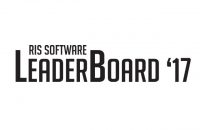How to Manage Mobile Retail Stores and Reduce Human Error with ERP
Instead of the customer coming to you, why not show up on their doorstep? Many brick-and-mortar retailers have implemented a mobile retail presence to ensure that they are always in the middle of the action.
For retailers with mobile stores or those considering this service, there is one very important question to answer:
“How on earth do I manage my mobile stores like I manage my brick-and-mortar locations?”
Good question. Our customer, Mister Safety Shoes (MSS), recently discussed how they addressed this concern in an interview with Innovations Magazine. In this brief blog post, we will summarize a few key takeaways for mid-sized retailers.
Loosely Tied Safety Shoes

Over the last 40 years, Mister Safety Shoes expanded to 16 brick-and-mortar locations and 17 mobile stores across Canada. Before overhauling their legacy ERP and POS solution, MSS experienced challenges in managing their mobile stores’ inventory, customer information, and equipment eligibility program. This involved a manual and laborious effort in replenishing inventory, which often resulted in mistakes made due to human error.
Up until 2010, their brick-and-mortar stores were still placing replenishment orders via fax machine! Of course, this type of process can lead to misplaced invoices and additional steps associated with end-of-day procedures. In the event that inventory went missing, Mister Safety Shoes risked putting a worker’s life in danger by not providing them with the safety equipment they need.
“There was a great deal of human element involved with the picking process, which meant back orders were not always being tracked.”
-John Colantonio, Managing Director of Mister Safety Shoes
Takeaway #1: If the safety and well-being of your customers lie in your hands and your software solution is failing you, it’s YOUR duty to make the change and improve.
Does the Shoe Fit?

Mister Safety Shoes took a hard look at their current infrastructure and soon realized that enough was enough. Gaps in communication, manual tasks, and recurring errors were just the tip of the iceberg. This led the company to search for a solution that could help them solve their problems.
Do any of these issues sound familiar? Retailers with similar business profiles must have a detailed understanding of their pain points before making a transition. A good place to start is our ERP Selection Checklist.
Takeaway #2: Treat your business as a patient and perform regular health check-ups. Remember this: ailments left untreated can lead to serious blisters.
Finding a Sole Mate

It can often be overwhelming to analyze various software solutions. For this reason, many retailers, such as Mister Safety Shoes, start by reaching out to their network and asking for recommendations. After all, we are more likely to trust the experience of a customer rather than the word of a brand.
After an elaborate gap analysis and numerous demos, Mister Safety Shoes chose Magstar Total Retail, including Total POS, Total Warehouse, Total CRM, and mobile handhelds for the warehouse. This enabled them to reduce manual data entries, email invoices, track inventory levels at all stores, and efficiently replenish mobile and brick-and-mortar stores. By replacing their legacy software, Mister Safety Shoes can now rely on Total Retail to rotate the gears in the background, all the while providing superior customer service, no matter where their mobile stores take them.
Takeaway #3: If the shoe fits make sure it’s adjustable, durable, and suited to your lifestyle. In other words, the software package you choose needs to support you now and in the future.
Final Thoughts
A flexible ERP solution can help retailers reduce human error and keep money in their pockets. There may never be a perfect time to make the switch from a legacy ERP, but retailers in the research stages need to take their time to find the ERP solution that’s right for them.
RECENT POSTS
 How to Offer a True Omnichannel ExperienceMister Safety Shoes shares their advice on how to [...]
How to Offer a True Omnichannel ExperienceMister Safety Shoes shares their advice on how to [...] Magstar Ranked #1 in 5 Top-20 Software Vendor Categories by 2017 RIS News LeaderBoardMagstar Inc has been recognized as a top-20 software [...]
Magstar Ranked #1 in 5 Top-20 Software Vendor Categories by 2017 RIS News LeaderBoardMagstar Inc has been recognized as a top-20 software [...] How to Ensure Your Customers Never Abandon a Queue Line AgainMister Safety Shoes shares their advice on how to [...]
How to Ensure Your Customers Never Abandon a Queue Line AgainMister Safety Shoes shares their advice on how to [...]